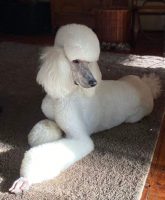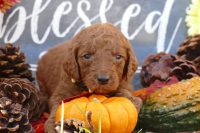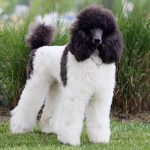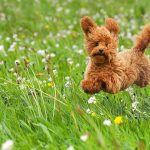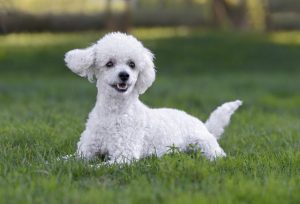 Poodles are well-known around the world for their loyalty, intelligence, sense of fun, and their good looks. For dog lovers interested in adding a Poodle to their family, this versatile breed comes in several different sizes to fit different lifestyles and living spaces. Understanding the basics of this breed, the temperament of this breed, and any special health needs are important if you are considering this breed as your next pet.
Poodles are well-known around the world for their loyalty, intelligence, sense of fun, and their good looks. For dog lovers interested in adding a Poodle to their family, this versatile breed comes in several different sizes to fit different lifestyles and living spaces. Understanding the basics of this breed, the temperament of this breed, and any special health needs are important if you are considering this breed as your next pet.
Sizes
Within the breed, there are three distinct size variations. It should be noted that these are variations within the breed and not different individual breeds. The largest is the Standard, which stands the tallest at over 15 inches tall and weighs the most, with a range of 45-70 lbs as the breed standard. The Miniature is a smaller version of the Standard, with a height standard of 11-15 inches tall and a weight standard of 15-17 lbs. The smallest is the Toy, with a height standard of up to 11 inches tall and a weight standard of 6-9 lbs.
The exercise needs of each size variation should be taken into consideration if you are thinking of a Poodle for your next dog. The Standard size of this breed is a large, athletic dog with a high amount of playful energy. This size requires a good-sized yard for running and playing or a dedicated owner who will exercise the dog with daily walks or runs. The smaller Miniature and Toy sizes of this breed, while playful and energetic, can be great choices for owners who live in apartments or in homes with limited outdoor space for the dog. The smaller sizes of this breed still require daily exercise and play time, but not at the same level as the Standard. It should be noted that with all small dogs, care should be taken to meet and not exceed their food requirements to keep their weight in the proper range and not create undue stress to smaller joints.
Colors
Poodles come in a wide array of colors, from white through black. The main colors found in this breed include white, apricot, brown, silver, gray, and black, but there are variations among the breed in color and in the intensity of color. There are also dogs that feature spots; this variation is known as the parti-color. While particolored dogs can be registered as purebreds with such organizations as AKC, this coloring has been historically barred from competing in breed conformation shows.
Temperament
This breed of dog is an outstanding family dog and companion. Their keen intelligence makes them easy to train and eager to learn; however, it should be noted that training should begin when the puppy is still young in order to create a foundation of trust and respect between the dog and the trainer.
These dogs are playful and enjoy human companionship. They make good watchdogs but will also welcome new people into the home once they are assured by their owners.
Health
As with any dog breed, care should be taken to feed them the appropriate amount of food for their age, stage, and height and weight requirements to avoid health issues that can arise from the dog becoming overweight, such as joint and back problems.
Specific health concerns for this breed include hip dysplasia, an inherited genetic issue that causes problems within the hip sockets and the ligaments around the hip sockets. Most reputable breeders carefully screen their dogs for hip dysplasia by x-ray and do not breed dogs with any signs of the disease. Hip dysplasia in dogs causes arthritis and lameness over time and impacts the dog’s quality of life.
Addison’s Disease is also a concern within this breed. This disease is caused by the adrenal glands not producing enough cortisone for the dog. Addison’s Disease can arise from problems with the adrenal glands themselves; these small glands are located on the kidneys. It can also arise from problems with the pituitary gland within the brain; the pituitary gland communicates with the adrenal glands and can be the root cause of Addison’s Disease in some cases. Addison’s Disease causes a range of problems from digestive issues, vomiting, lethargy, to skin issues such as sores and hair loss. Treatment is available but the disease is not curable.
Additional Facts
As a breed, these dogs were developed as hunting dogs and water retrievers. The unique and distinctive haircut seen on this breed in the show ring, with the puffs of fur over the ankles, on the upper back of the dog, and around the chest and neck, was actually developed to keep vital organs and joints of the dog warm while swimming in cold water.
This breed does not shed like other breeds, making it an ideal choice for homes where family members have allergies. Their coat should be groomed regularly to avoid tangles and matting and can be clipped in the classic Poodle style or can simply be trimmed to a shorter overall length for easy care.
